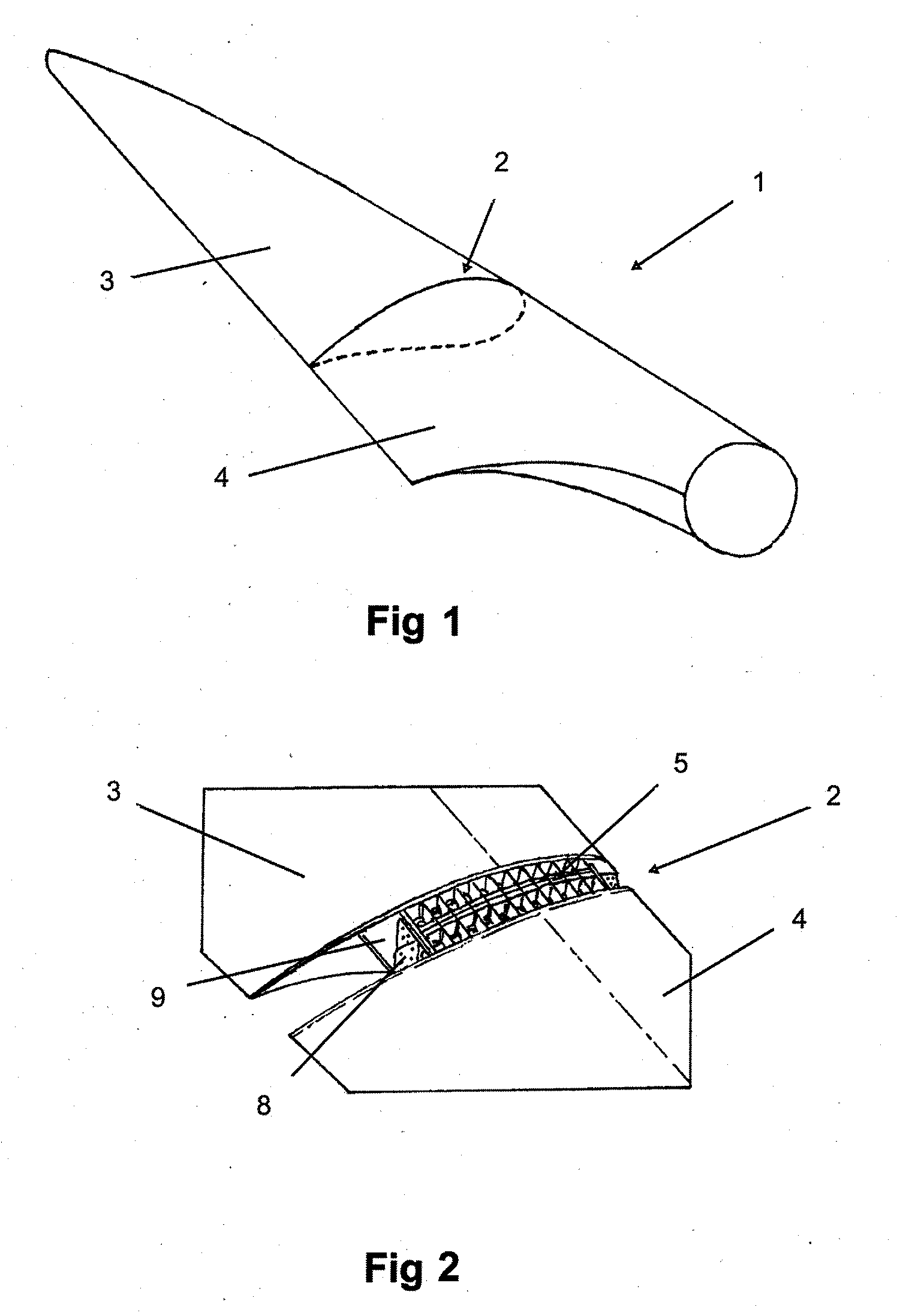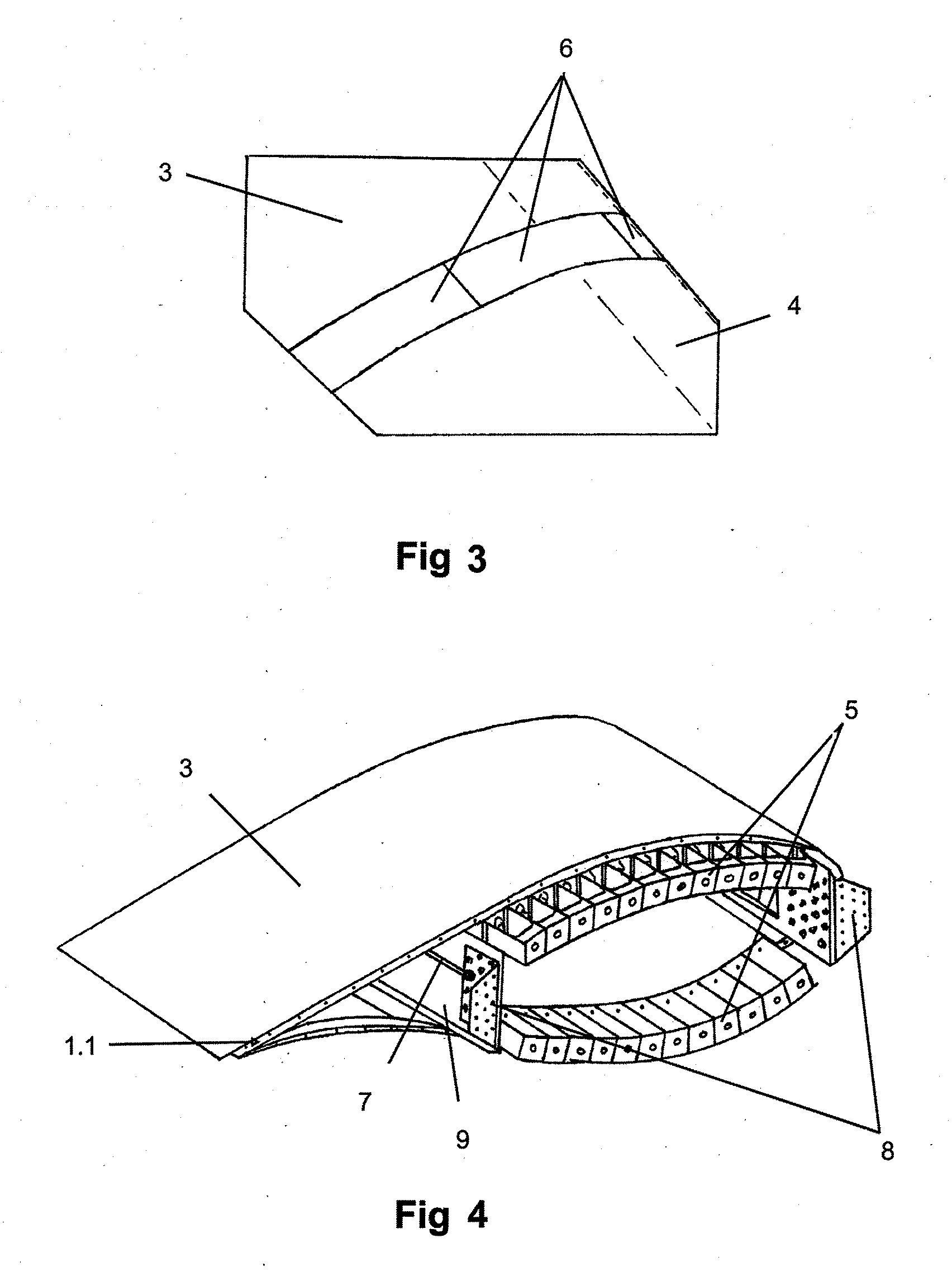Lightning protection system for sectional blades
a protection system and sectional blade technology, applied in wind turbines with parallel air flow, liquid fuel engine components, wind energy generation, etc., can solve the problems of affecting the performance of the blade fiber laminate, the difference in power can give way to skipping the arc, and the blade fiber can be fatally damaged, etc., to achieve easy replacement and inspection.
- Summary
- Abstract
- Description
- Claims
- Application Information
AI Technical Summary
Benefits of technology
Problems solved by technology
Method used
Image
Examples
Embodiment Construction
[0015]This invention consists of a lightning protection system for intermediate wind turbine blade joints comprising a metal fairing that covers the blade connector elements, maintaining the aerodynamic geometry of the blade section while protecting the internal connector elements from getting hit by lightning.
[0016]This invention applies to a blade that comprises several modules that are connected with each other through a bolted joint and that has a lightning strike protection system comprised of a receptor on one end of the blade and a grounding cable that extends throughout the length of the structural beam of the blade.
[0017]Once the structural joint between the blade modules is completed, said joint is covered with a series of metal fairings, which achieve a continuity in the surface on the outside of the blade, shielding the volume contained by the fairings where the metal elements of the joint are located, meaning, they create an enclosure where the existing electric field i...
PUM
 Login to View More
Login to View More Abstract
Description
Claims
Application Information
 Login to View More
Login to View More - R&D
- Intellectual Property
- Life Sciences
- Materials
- Tech Scout
- Unparalleled Data Quality
- Higher Quality Content
- 60% Fewer Hallucinations
Browse by: Latest US Patents, China's latest patents, Technical Efficacy Thesaurus, Application Domain, Technology Topic, Popular Technical Reports.
© 2025 PatSnap. All rights reserved.Legal|Privacy policy|Modern Slavery Act Transparency Statement|Sitemap|About US| Contact US: help@patsnap.com



